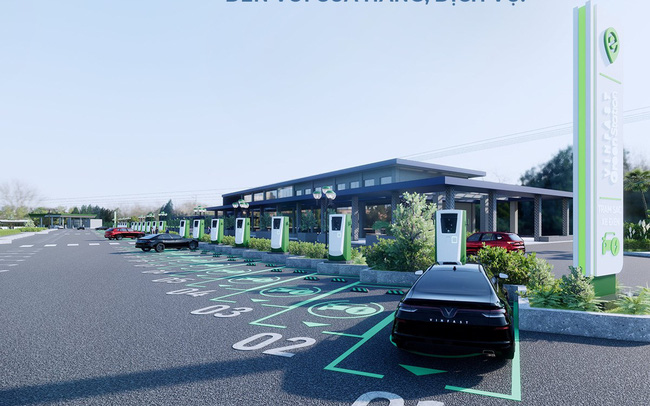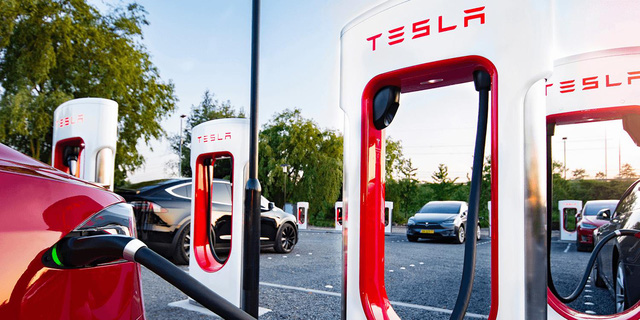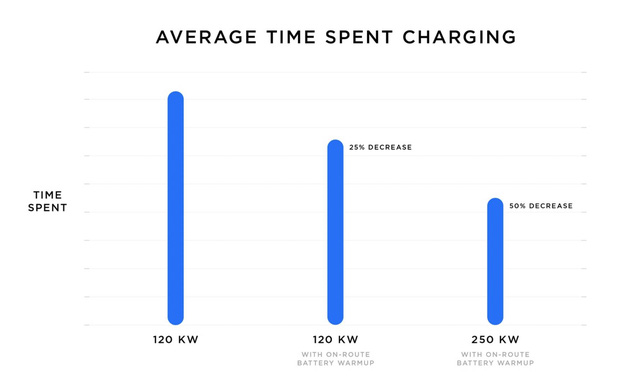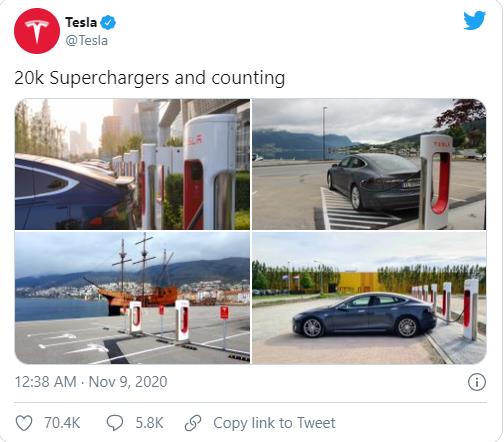Today, many car manufacturers are developing electric cars to meet the standards of many government organizations for environmental protection. The higher the demand for electric vehicles, the greater the demand for charging stations; they will be the fuel source for these cars over long distances.
Today, charging stations are as important as filling stations for traditional cars. Therefore, alongside the production of electric cars, charging stations must also be prepared and installed very meticulously.
Tesla – the pioneer in the field of electric vehicles has developed a roadmap to build charging stations in many places not only in the United States but also around the world, worthy of other companies to follow.

In Vietnam, Vinfast has launched a strategy to build its own charging stations to support not only cars but also its electric motorcycles. Like Tesla, this will help Vinfast not only earn profit by recharging cars, but the number of its cars sold will likely increase due to the convenience of customers.
The automaker is part of billionaire Pham Nhat Vuong’s group recently released an announcement calling on partners to have appropriate premises and invest in a nationwide electric vehicle charging station infrastructure with a planned network of 2,000 charging stations. recharging with more than 40,000 charging stations. VinFast said that the charging stations will be developed according to European standards, that the charging station will work automatically and can be located in any parking area without changing the capacity of the parking area.

From the start of electric vehicle production, charging stations had become Tesla’s main concern; they built their network from the very start of one of the first electric cars – the Model S. Unlike the approach of many other automakers focusing only on feature development, Tesla took the initiative to bring a greater utility to their customers.
Nissan is a prime example. With the Leaf relatively affordable and innovative features, it quickly dominated the electric vehicle market and the Nissan Leaf was also the best-selling electric car between 2011 and 2014. However, Nissan is not building a network of charging stations for users. fast charging but relies on third party which causes a lot of problems for customers.
Realizing this, since 2012, Tesla started to introduce six fast charging stations called Tesla Supercharger. Tesla started with the standard 150kW SuperCharger V1 and V2 charge shafts. With such a capacity, users take around 20 minutes to charge to 50%, 40 minutes to charge to 80% and 75 minutes to 100% for the Tesla Model S.

In September 2017, Tesla announced the launch of Urban Superchargers. The urban compressor is more compact than the standard compressor, which is mainly deployed in large urban areas such as parking lots and garages in the shopping center.
Compared to the standard Supercharger, the Urban Supercharger has a maximum capacity of 72 kW, which is about half the amount. These urban charging stations are currently only in use in the United States and will be used in many more locations over the next several years. 2 years later, the company continues to introduce the Supercharger V3 charger in New York with many great features, including the charging speed has improved significantly. All electric cars produced by Tesla, models S, X, Y … can use these chargers.

In 2016, the average number of Tesla cars that could be recharged at the same time per Supercharger cabin was 34; The cost of building a charging station is around $ 100,000 (2013) and goes up to $ 270,000 by 2015, depending on the number of charging trees installed. The company expects these rechargeable trees to be around 12 years old.
At first, less than 10% of all the electricity used to charge cars came from Tesla charging stations. However, by 2019, according to data provided by Tesla, up to 72 GWh of electricity will be used through their charging stations around the world. Most Supercharger charging stations are owned by Tesla, only a small number of stations owned by taxi companies with fleets of electric vehicles purchased from Tesla itself.
Tesla also applies a fairly flexible policy to the use of its charging stations. Model S and X electric vehicles ordered from Tesla before January 15, 2017 will be used free of charge at charging stations until the end of the vehicle’s life cycle. Vehicles purchased from January 15, 2017 to November 2, 2018 will be free of approximately 400 KWh (equivalent to approximately 1,000 to 1,600 miles of travel); Once exhausted, they will pay a fee deemed lower than the cost of using gasoline for traditional cars. This price is around 0.2 to 0.26 USD / KWh (equivalent to 6000 VND / KWh) in the United States (except Hawaii). During the same period, up to 5 friends and owners of the current Tesla electric vehicle will receive a free lifetime car charge at this charging station, with those who purchase the car from the manufacturer via the referral code.

At the end of 2014, 119 Tesla Supercharger stations were in service in the United States, 76 in Europe and 26 in Asia. As of March 2020, Tesla had 1,826 charging stations around the world with 16,103 charging stations, including 908 stations in the United States, 398 stations in Asia and the rest scattered in many other countries around the world. Tesla’s rechargeable tree count reached 20,000 in November last year, indicating the company’s extremely strong coverage.

So, it can be seen that through the development of charging stations, Tesla not only has more income from the sale of electricity to cars, but also helps to increase the number of cars sold – which is the main business segment. of the company. This is why although many companies are developing electric cars even earlier than Tesla, but so far their cars have the strongest coverage in the world.


